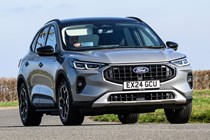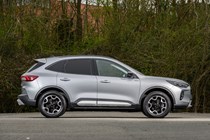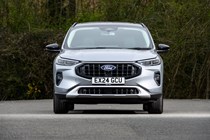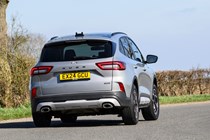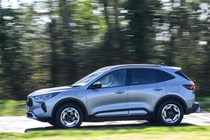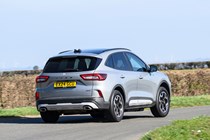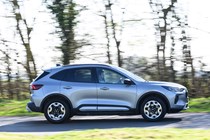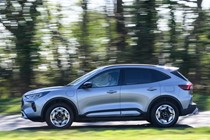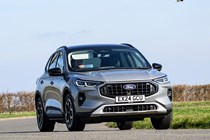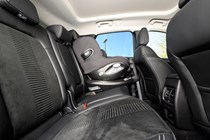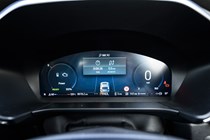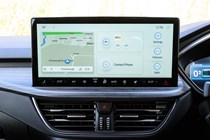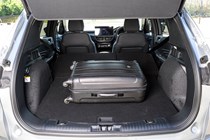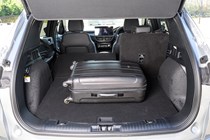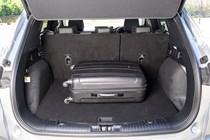Ford Kuga running costs and reliability

Miles per pound (mpp)
| Petrol engines | 6.0 - 6.5 mpp |
|---|---|
| Diesel engines | 5.9 - 7.7 mpp |
| Hybrid petrol engines | 6.9 - 7.7 mpp |
| Plug-in hybrid petrol engines * | 6.4 mpp |
Fuel economy
| Petrol engines | 40.9 - 44.1 mpg |
|---|---|
| Diesel engines | 46.3 - 60.1 mpg |
| Hybrid petrol engines | 47.1 - 52.3 mpg |
| Plug-in hybrid petrol engines * | 43.5 mpg |
- Hybrids impressively inexpensive to run
- PHEV range is fine, but not class leading
- Major recalls for PHEV battery packs
What are the running costs?
Every model in the Kuga line-up promises good fuel economy figures and low running costs. Ford says the 1.5-litre petrol model can achieve mid-forties economy on the WLTP cycle, with CO2 emissions hovering around the 150g/km mark.
The 2.5-litre four-cylinder full hybrid performs better still. Ford claims fuel economy figures in the low fifties, which we found to be accurate in the real world. Thanks to the electrical assistance, CO2 emissions are around 125g/km which is very competitive for this size of car.
The real headline grabber is the plug-in hybrid model, though. Ford says that can return around 300mpg on the WLTP cycle. However, in the real world, the amount of miles you’ll extract from a gallon of petrol depends entirely on how often you’re willing to charge it up.
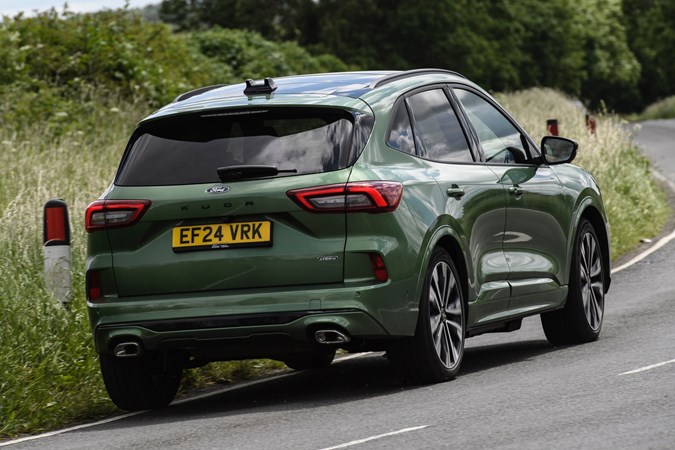
Charge the battery regularly and do lots of short journeys (where you can take advantage of the Kuga’s near 35-mile real world electric range) and you’ll see your fuel economy numbers skyrocket. Tackle long journeys with a discharged battery and you’ll see the opposite.
However, during our time with the Kuga PHEV, we found it to be one of the most efficient plug-in hybrids when driving with a discharged battery. Ford seems to have engineered the system to always keep a tiny bit of charge in the battery so the electrical side of the car’s powertrain can keep working even when you neglect to plug it in. That means over 50mpg is possible if you’re very careful. In recent testing, only the Toyota C-HR was more efficient with a flat battery.
Just be aware that there are now rivals offering substantially longer electric ranges, and therefore lower CO2 and reduced company car tax rates. The Volkswagen Tiguan e-Hybrid, for example, promises 77 electric miles from a charge.
Servicing and warranty
Ford offers a two-tier service plan that helps you spread the cost of scheduled services (oil changes, brake fluid changes and filter changes) as well as wear and tear items (brake pads, shock absorbers, wiper blades, clutch plates and exhaust silencers). You can also choose to bundle both these plans into one for an extra fee.
Every new Ford is sold with a three-year / 60,000-mile warranty. However, you can choose to extend this warranty to either four years / 80,000 miles or five years / 100,000 miles if you pay some extra money. Every new Ford also comes with 12 months free roadside assistance – and that covers you for anywhere in Europe.
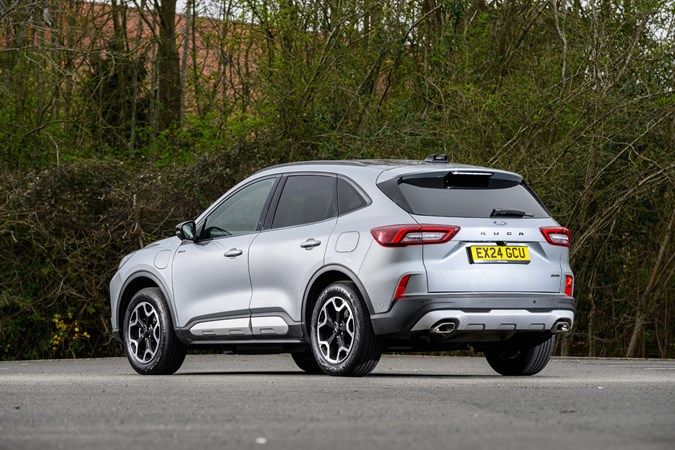
Reliability
- Regular hybrid and petrol are fine
- PHEV has had a battery recall for fire risk
- Off-roading may produce underbody damage
For the most part, the Ford Kuga’s reliability record stands up to that of the Focus on which it’s based. That’s to say it’s good. Its chassis and engines have been around for a while now and no serious reliability issues have cropped up so far.
The plug-in hybrid model is slightly different, though. It was the first PHEV Ford launched in the UK, so there were bound to be some teething issues. For example, the battery packs on earlier cars were all recalled due to fire risk. Ford has since been rectified this – and any used cars should have had their batteries replaced under warranty.
It’s also worth knowing that, despite looking like an off roader, the Ford Kuga is basically a lifted hatchback. So don’t get too enthusiastic on the rough stuff, because the mechanicals can’t cope with the same sort of punishment you can dole out to a Dacia Bigster.
Ongoing running costs
| Road tax | £195 - £620 |
|---|---|
| Insurance group | 10 - 26 |
Get an insurance quote with

|
|


